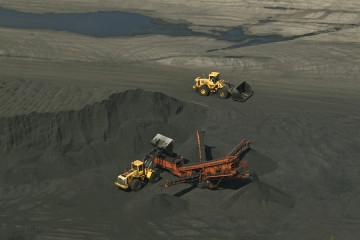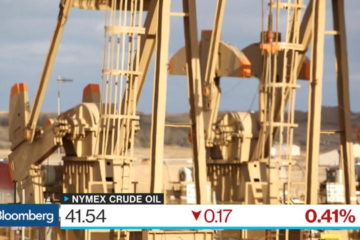Bloomberg Business: More Coal Cuts Seen Ahead as Demand for Steel Slows: Commodities
Copyright 2015 Bloomberg.
NL4C4M6TTDS8
(Bloomberg) — In the last year, mining companies eliminated about 15 million tons of production capacity for the coal used to make steel, while outlining plans to double those cuts in the near future.
It won’t be near enough. That’s the determination of Chief Executive Officer Don Lindsay at Teck Resources Ltd., the world’s second-biggest exporter of metallurgical coal. For supply to match flagging demand, the industry must cut a total of as much as 45 million tons, he says, raising the ante as prices sit at a six-year low. While U.S. and Australian miners are now losing money on as much as 50 million tons of annual capacity, they’re dragging their feet on reductions at high-cost mines. The result: a “miserable” market for at least six months, and perhaps as long as a year, according to Lindsay. “There’s a lot of production that’s underwater, but it takes a long time for them actually to shut,” Lindsay said in an interview. “They always last longer than you think.” There are two main types of coal. Lower-quality coal is burned to generate electricity, and coal with fewer impurities is used to make steel. Metallurgical coal makes up about 15 percent of production, and sells for about twice the price of thermal coal. Prices for steelmaking coal surged in 2010 and 2011 and producers raced to increase output to catch up with China’s voracious demand. Mining companies splurged on acquisitions and revved up spending on existing coal assets.
‘Demand Growth’
“Unfortunately for the miners, the flood of new seaborne coal supply in response to high prices was more than adequate to meet demand growth,” Jefferies LLC analysts including Christopher LaFemina said in a research note March 10. “The coal mining industry clearly overestimated Chinese demand growth,” where about half of the world’s steel is made. U.S. coal producers have already borne the brunt of cutbacks. They are the “most vulnerable,” according to a report Thursday from Moody’s Investors Service, which lowered its outlook for the North American coal industry to negative from stable. Quarterly benchmark prices for seaborne metallurgical coal have dropped from a peak of $330 a metric ton in 2011 to $117 a ton now. While that’s put the brakes on expansion plans, there’s still too much supply, Moody’s said. As output increased, Chinese demand for imported metallurgical coal has declined. Steel output there will shrink this year as consumption has peaked, a representative of the China Iron & Steel Association said March 11 at an iron ore conference in Perth, Australia. Metallurgical coal producers have announced about 30 million tons of closures for 2014 and 2015, and have implemented about half of that, Jefferies said.
Into Balance
Teck, a Vancouver-based company is the second-biggest producer of seaborne metallurgical coal, from five mines in British Columbia and one in Alberta. Coal generated about 39 percent of its revenue last year. Lindsay’s view contrasts with a rosier picture presented by several U.S. producers including Alpha Natural Resources Inc. “The global seaborne met coal market appears to have stabilized over the last several months,” Alpha CEO Kevin Crutchfield said in an earnings conference call last month. Peabody Energy Corp. CEO Gregory Boyce echoed that notion in a January conference call. “In 2015, we forecast that seaborne metallurgical coal demand growth will outpace supply increases for the first time since 2011,” he said. Not everyone is so sure. While mine closures will probably accelerate this year, they’re unlikely to correct the market imbalance, Rory Simington, an analyst at the consulting company Wood Mackenzie, said in a report last month.
While the industry needs to cut back as a whole, individual companies may be reluctant. Supply contracts often make it more costly for them to shut down a mine than to operate at a loss, Simington said. That means mines stay in production longer, slowing the return to a more balanced market.
Once the necessary cuts happen, Lindsay said he’s expecting a “pretty decent” increase in metallurgical coal prices. “It’ll probably move $10 the first go and then another $20,” he said. “And then I won’t call it a miserable market anymore, because then we will be making another billion dollars.”
For Related News and Information: China’s Steel Output Seen Shrinking in 2015 as Rio, BHP Decline Teck Tumbles as Moody’s Cites Coal for Cash Drain: Canada Credit Global Coal Market Seen in ‘Bad Shape’ as Supply Glut Expands Teck news: TCK US <Equity> CN BN <GO> Top commodity stories: CTOP <GO> Bloomberg Intelligence coal research: BI COAL <GO>
To contact the reporters on this story: Liezel Hill in Toronto at lhill30@bloomberg.net; Tim Loh in New York at tloh16@bloomberg.net To contact the editors responsible for this story: Simon Casey at scasey4@bloomberg.net Will Wade







No Comment